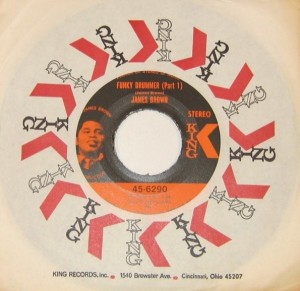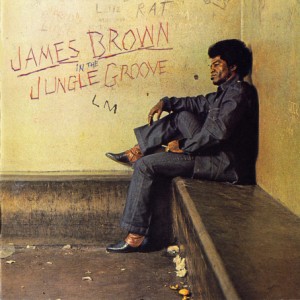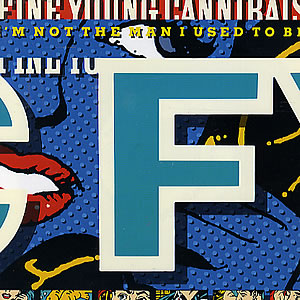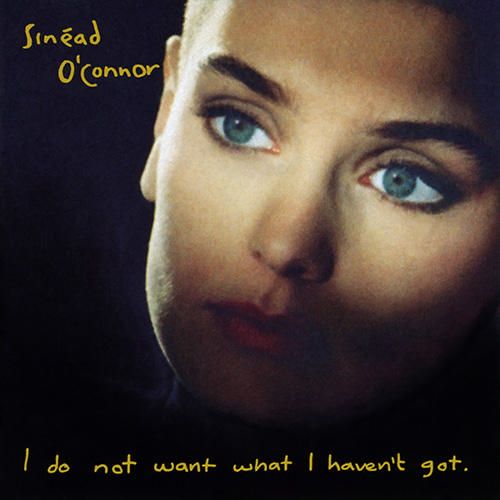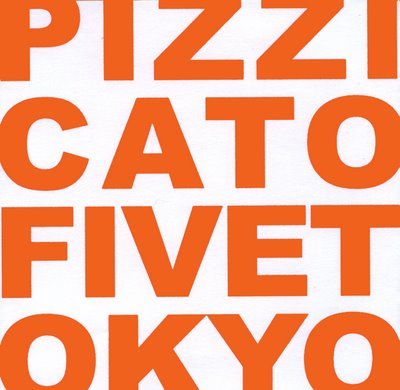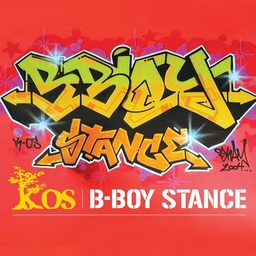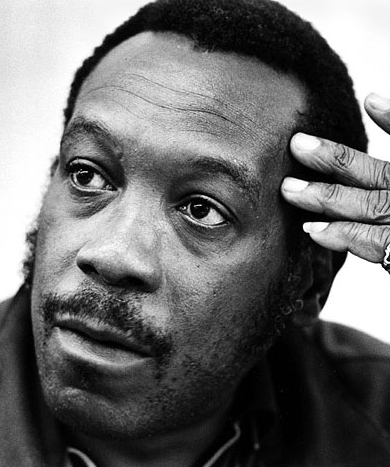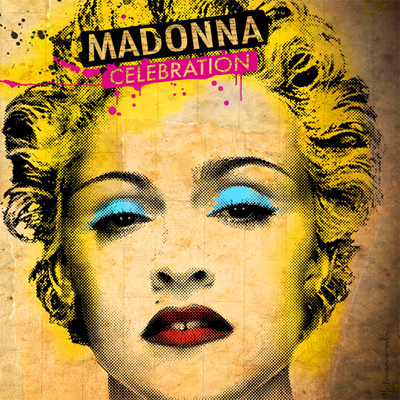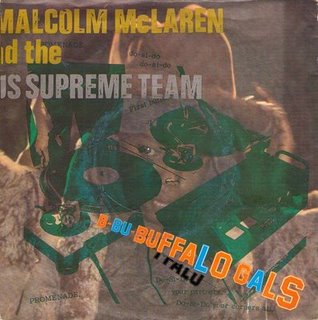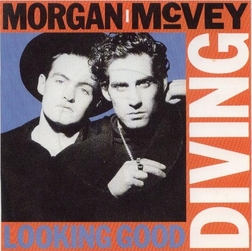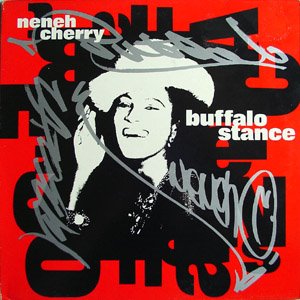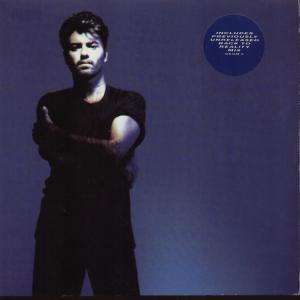Posts Tagged george michael
Total Deconstruction: Buffalo Stance
Posted by Gavin Bradley in Remixing, Writing on June 3, 2009
1. In 1982 the Sex Pistols’ manager Malcolm McLaren jumped ship on punk by traveling to New York and appropriating elements of cutting edge hip hop culture on a groundbreaking single called ‘Buffalo Gals’.
2. In 1986 a British duo Morgan McVey released a painfully cheesy pop song called ‘Looking Good Diving.’
3. The duo’s Cameron McVey asked his wife, Neneh Cherry, to come in and rap over an instrumental version of the song. That version was released as the b-side, listed as ‘Looking Good Diving With The Wild Bunch’. (She was a member of the Wild Bunch crew, along with members of Massive Attack.)
4. Oddly, Nick Kamen also recorded a version.
5. In 1988 Cherry’s rap was salvaged–along with the excellent synth hooks from Looking Good Diving–and parts of ‘Buffalo Gals’ were scratched in over a new beat to concoct Neneh Cherry’s seminal single ‘Buffalo Stance’.
6. The song was then remixed to death, in an era when remixing was taking a giant leap. The purpose of a remix had always been to extend a song, perhaps throwing in a little extra ear candy for the dancefloor. But now that you could load the whole acapella into a sampler and access sections of it at will–as opposed to having to run it off of a linear master tape–total deconstruction became the norm.
Dropping the needle on a single like ‘Buffalo Stance’, you heard every familiar nuance of the vocal track over an entirely unfamiliar backdrop…structure, chords and rhythms entirely re-imagined. It took three 12″ singles and one 7″ single to squeeze all the juice out of this track. It was as though the remixers tag-teamed, sampling elements of each others’ versions and riffing on them further.
Below are a series of excerpts: the classic benchmark ’12” Mix’ which was the long version of the original Tim Simenon production; the Dynamik Duo’s sparse ‘Sukka Mix’ containing all kinds of gritty vocal outtakes; Arthur Baker’s ‘1/2 Way 2 House Mix’ which placed the vocal over a mellow house-ish groove before moving on to an abstract collage of vocal samples; Kevin Saunderson’s crunchy ‘Technostance Remix I’ which sort of encapsulated samples of the original version in between dubby loops; and finally Massive Attack’s bizarre disco take entitled ‘There’s Nothing Wrong Sukka Mix’.
7. In 1990 George Michael got his fingers in the pudding by releasing a remix of ‘Freedom 90’ that combined vocals from his original song with his own rendition of Soul II Soul’s ‘Back To Life’. In re-singing it, he lovingly emulated Caron Wheeler’s every phrase. The mix also contained a sample of the fiddle riff from Sinead O’Connor’s ‘I Am Stretched On Your Grave’ and a re-created loop from ‘Buffalo Stance’ (the ‘Buffalo Gals’ scratches and his rip of Neneh Cherry’s ‘Get Funky’). This ‘remix’ (or medley, as it would more accurately be called, since he took this opportunity to sing portions of peoples’ songs) felt like a synchronistic experience for me as those particular songs he chose to combine had all been huge for me that year.
What fascinates me about this evolution is not just the multiple levels of cut-and-paste that went on through these productions, but the fact that this exposes a clear example of the sort of rewriting/rethinking that sometimes must happen before a song hits its apex. Cherry’s rap on the b-side of ‘Looking Good Diving’ isn’t the fully realized version of the lyrics she went with on ‘Buffalo Stance,’ and neither is her confidence in place, yet, vocally.
